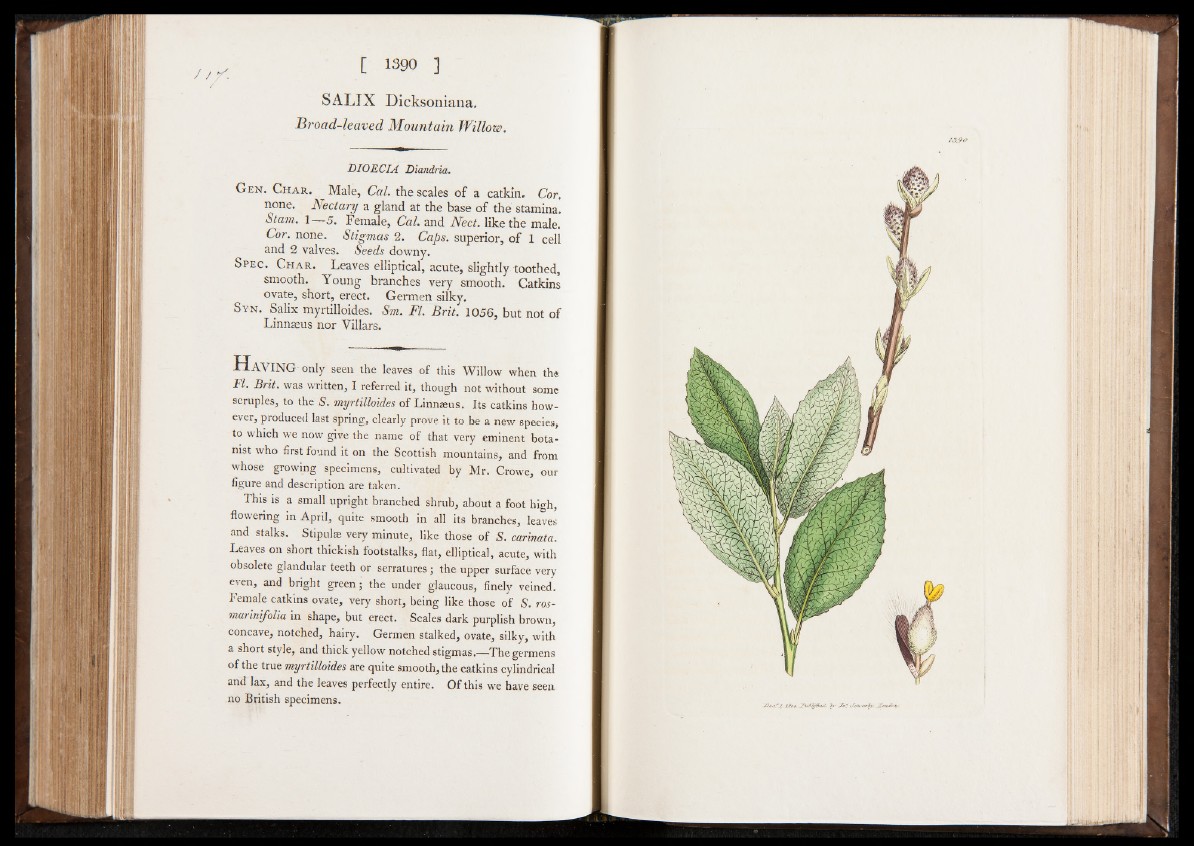
S A L IX D ic k so n ia n a .
Broad-leaved, Mountain Willow,
DIOECIA Diandria.
G en. Char. Male, Cal. the scales of a catkin. Cor,
none. N e ctary a gland at the base of the stamina.
S t am. 1 5. Female, Cal. and Nect. like the male.
Cor. none. Stigmas 2. Caps, superior, of 1 cell
and 2 valves. Seeds downy.
Spec. Char. Leaves elliptical, acute, slightly toothed,
smooth. Young branches very smooth. Catkins
ovate, short, erect. Germen silky.
Syn . Salix myrtilloides. Sm. FI. B rit. 1056, but not of
Linnaeus nor Villars.
H a v in g only seen the leaves of this Willow when the
FI. Brit, was written, I referred it, though not without some
scruples, to the S. myrtilloides of Linnaeus. Its catkins however,
produced last spring, clearly prove it to be a new species,
to which we now give the name of that very eminent botanist
who first found it on the Scottish mountains, and from
whose growing specimens, cultivated by Mr. Crowe, our
figure and description are taken.
This is a small upright branched shrub, about a foot high,
flowering in April, quite smooth in all its branches, leaves
and stalks. Stipulse very minute, like those of S. carinata.
Leaves on short thickish footstalks, flat, elliptical, acute, with
obsolete glandular teeth or serratures; the upper surface very
even, and bright green; the under glaucous, finely veined.
Female catkins ovate, very short, being like those of S. ros-
maiinifolia in shape, but erect. Scales dark purplish brown,
concave, notched, hairy. Germen stalked, ovate, silky, with
a short style, and thick yellow notched stigmas.—The germens
of the true myrtilloides are quite smooth, the catkins cylindrical
and lax, and the leaves perfectly entire. Of this we have seen
no British specimens.
~ 7 7 [
2>- iZmJ OoH e f &y. -Zcny«r,